How To Revive An Orchid: 5 Ways To Bring It Back To Life
Don't give up on your ailing orchid – follow these expert tips to get it thriving and blooming once again.
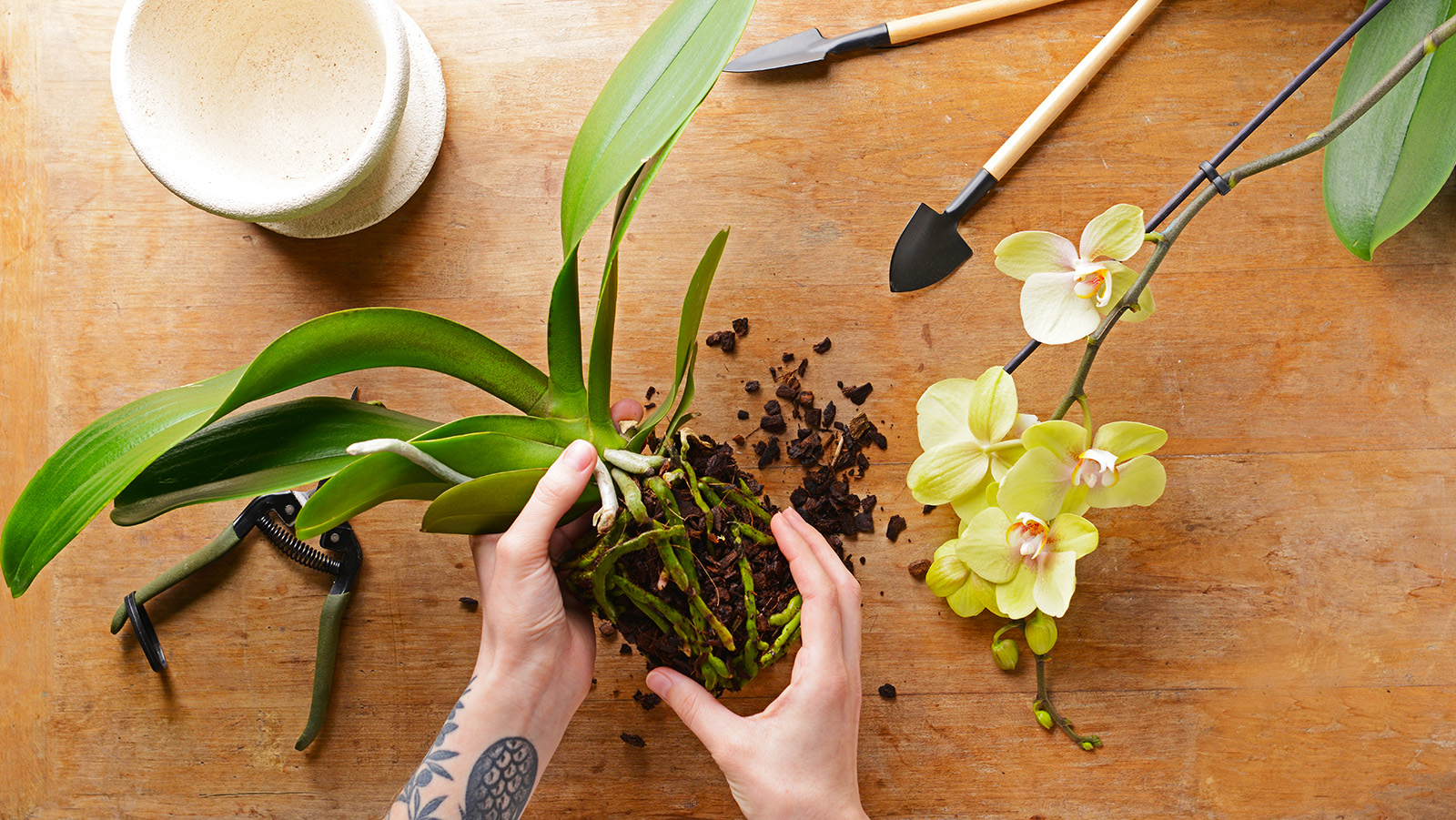

Melanie Griffiths
Orchids make beautiful houseplants. While they're not difficult to grow, good orchid care is essential for repeat flowering. Where the plants' needs are not met, they may begin to show signs of distress and eventually die.
If your orchid hasn’t bloomed in a while, don’t despair. Most types of orchids bloom once or twice a year and go dormant for several months.
Start to worry when it hasn’t bloomed for a year or more or if it shows other signs of ill health, like yellow leaves, excessive leaf drop, or wilting. Even then, several steps can bring it back to life.
Try these tactics tested and used by orchid enthusiasts and experts.
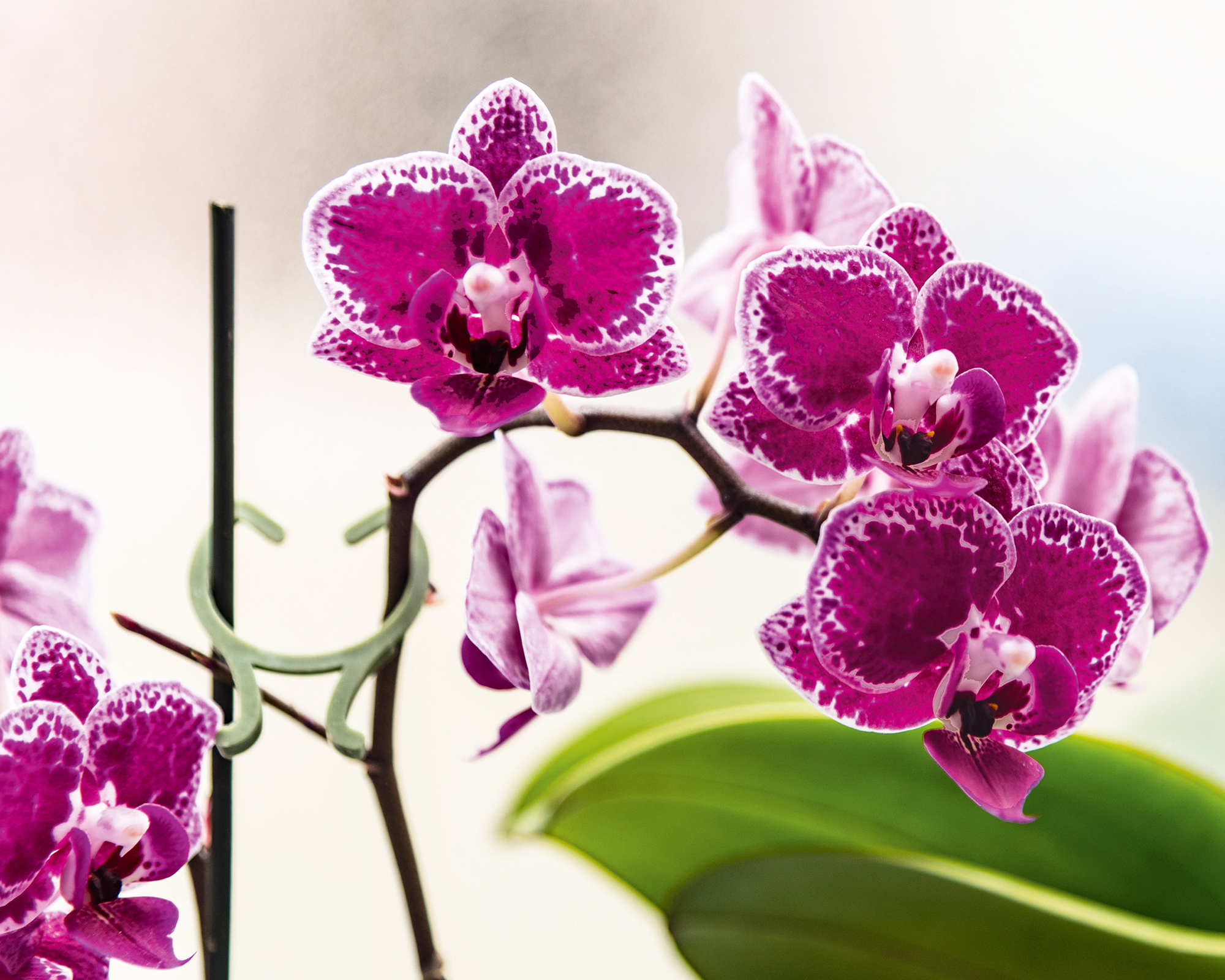
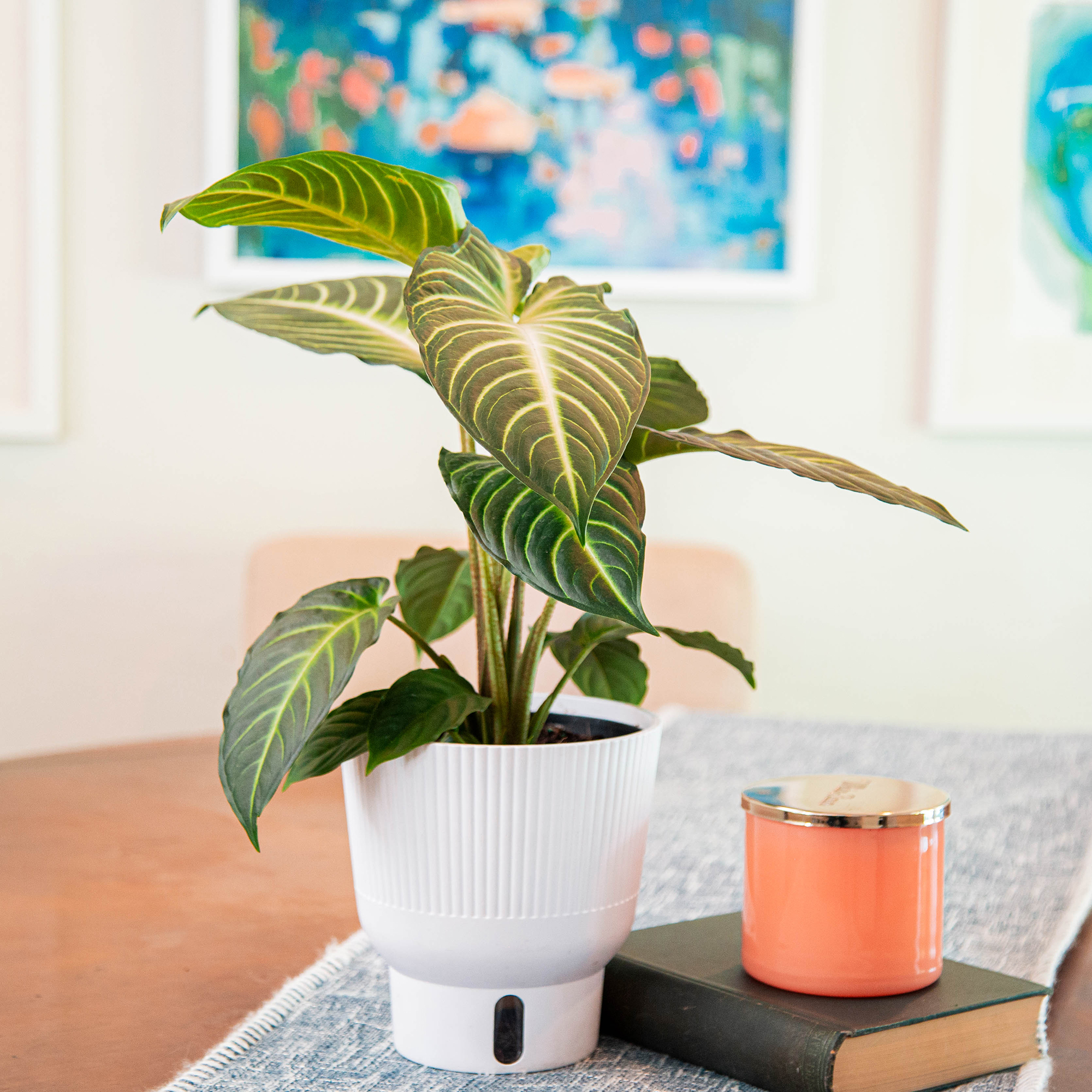
Discover stunning and unusual houseplants from around the globe – all selected for their unique appearance and ability to thrive in the home environment.
1. Let Your Orchid Enjoy Dormancy
Orchids are not like some houseplants – African violets, for instance – that can be fertilized until they bloom nearly constantly. Most orchids need to go dormant for a while before flowering again. A healthy orchid flowers for several weeks, even two or three months, and then goes dormant for six to nine months. Let your orchid rest during this period so that it can rebloom when it’s ready.
However, there are exceptions such as Phalaenopsis orchids, which do not go truly dormant. If you have this orchid, don’t remove its stem, as it can rebloom on the same spike.
For most other orchids, dormancy begins when the last petals drop. When that happens, snip off the flower stem and get the plant ready to rest. Ease up on watering and stop fertilizing the orchid. Place the dormant plant somewhere with slightly cooler temperatures, around 60 or 65°F (15 to 18°C). Ensure the plant is in darkness throughout the night.
Gardening tips, videos, info and more delivered right to your inbox!
Sign up for the Gardening Know How newsletter today and receive a free copy of our e-book "How to Grow Delicious Tomatoes".
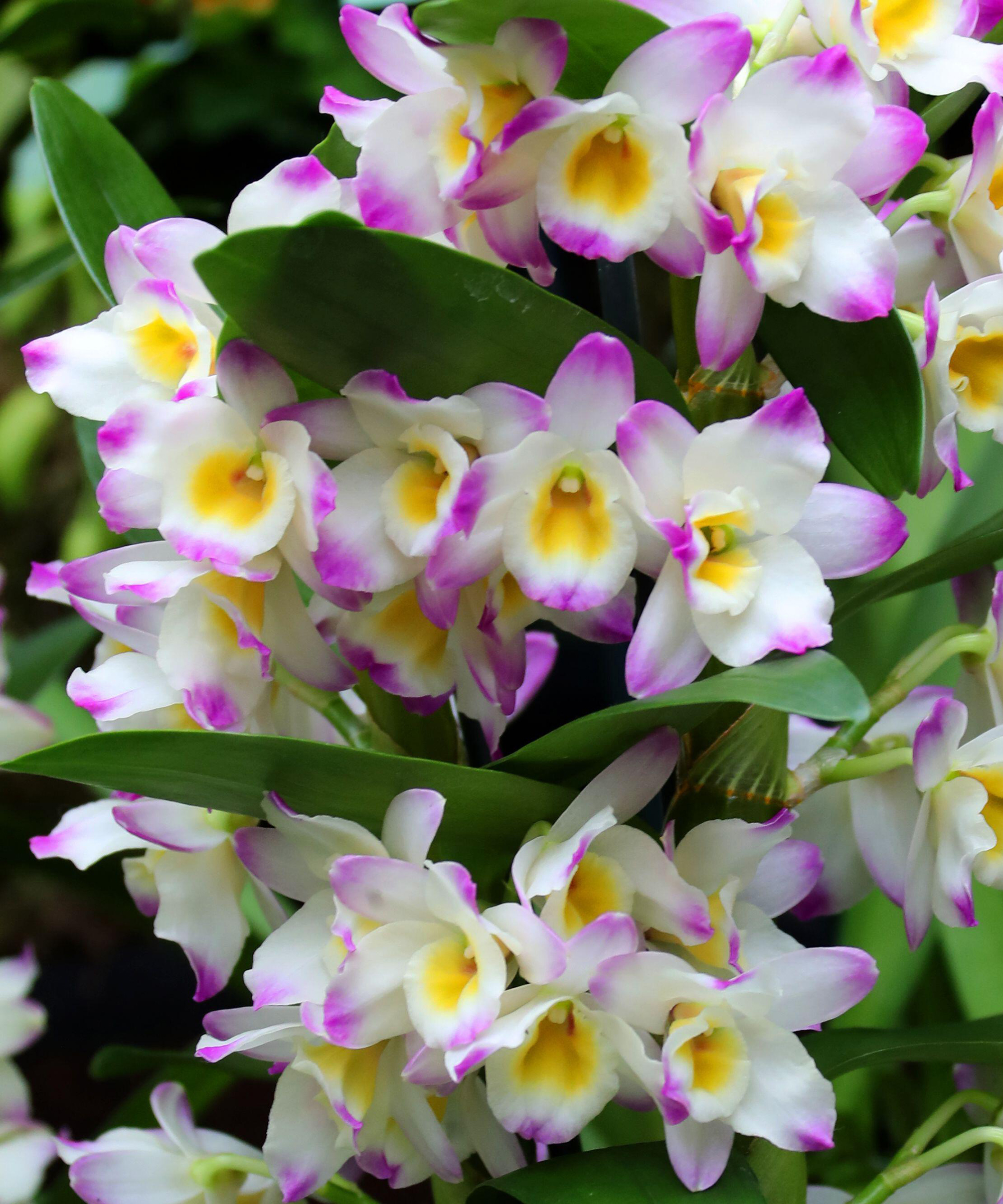
2. Check Roots And Repot
If your orchid looks unhappy or isn’t reblooming, it might need some root care and a new pot. A good sign it needs a bigger pot is roots hanging over the edges or coming out of the drainage hole. Also, if it looks too big for its pot and is top-heavy, it probably needs repotting.
To repot an orchid, remove the plant from its container and examine the roots. A healthy plant should have green, fleshy roots. Pale green, slightly flaccid roots are not great but can be revived. Trim off any clearly dead roots, those that are brown, mushy, or totally dried out.
Choose a slightly larger orchid container and use a fresh orchid potting medium. The medium gets depleted of nutrients and should be replaced every year or two.
Never repot an orchid while it’s blooming – wait until after the flowers are spent.
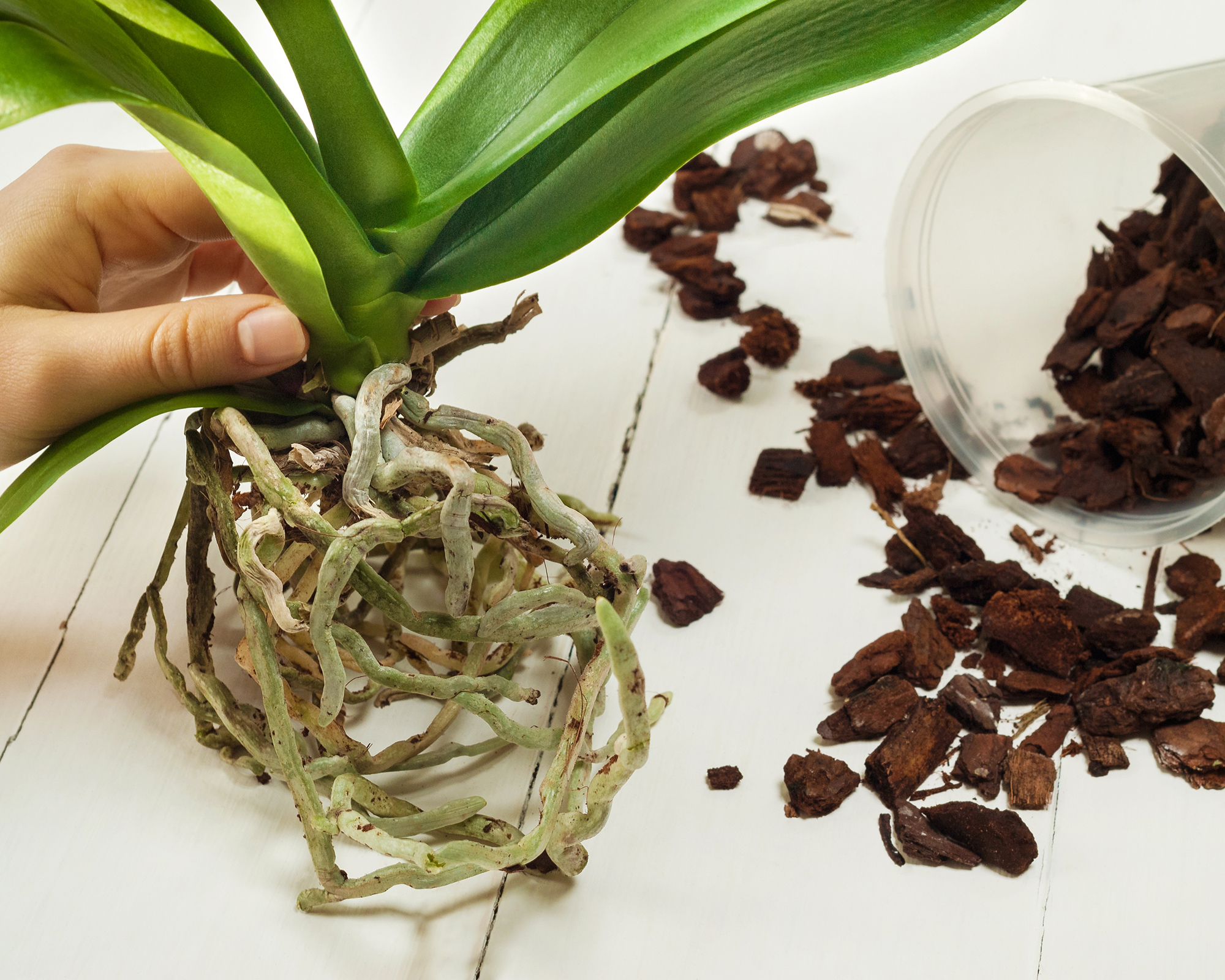

Want to learn techniques to improve your garden’s climate “score” AND create a beautiful regenerative oasis in your backyard?
3. Change The Watering Schedule
Checking the roots is important for determining the plant’s health but also for evaluating your regular watering schedule.
Learning how to water orchids is often a case of trial and error. Many people are afraid to overwater orchids and end up underwatering, in which case you’ll see dry roots.
If you have been overwatering, the roots might be soft and mushy, showing signs of rot. Adjust your watering schedule as needed and trim away any rotten roots.
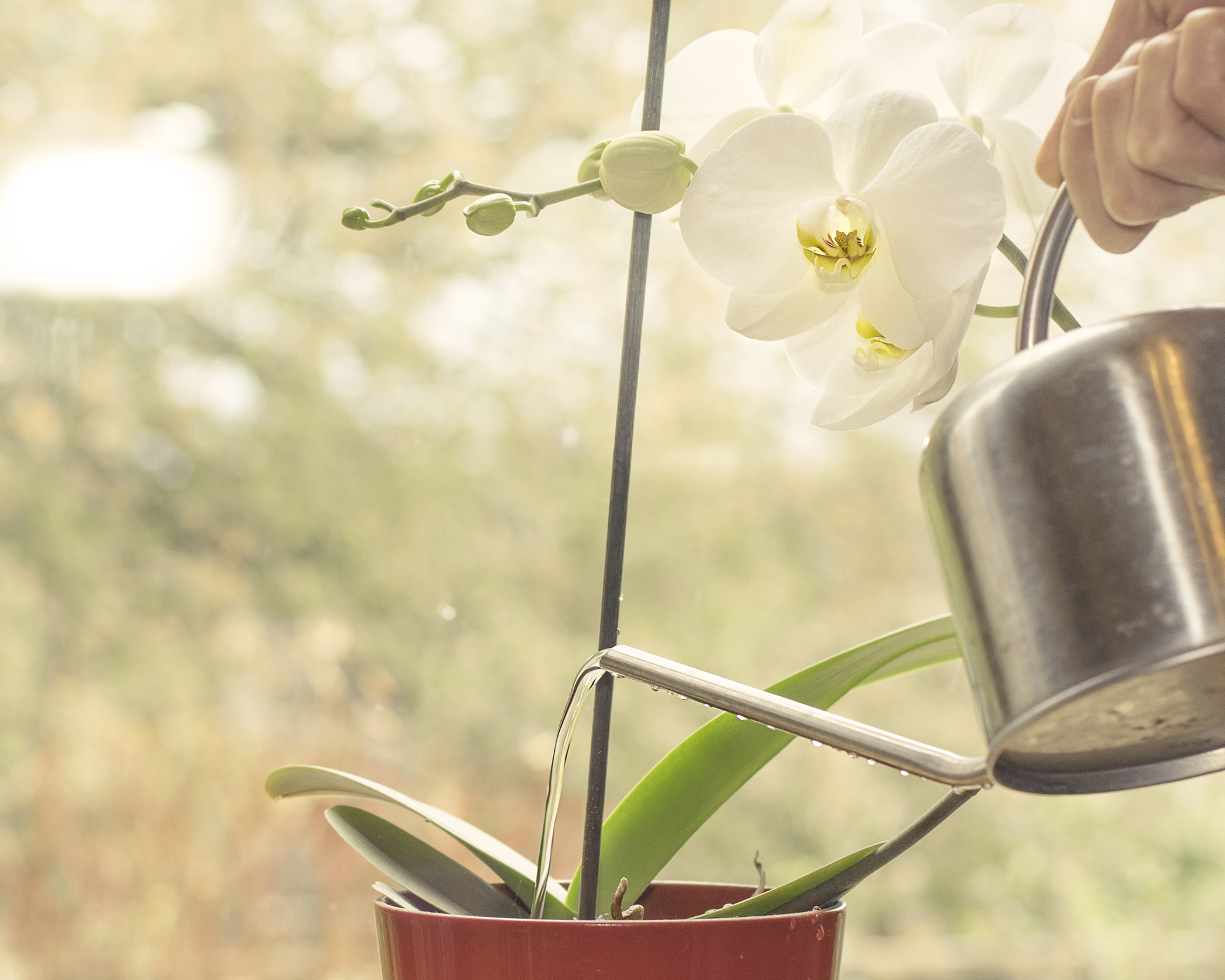
4. Soak A Dried Out Orchid
If your issue has been underwatering, give the plant a good soak before repotting and adjusting to a new watering schedule. An orchid can look very dry and shriveled but come back to life after soaking.
Growing orchids in water is a popular solution that can rescue ailing plants – though rather than being constantly submerged, orchids are usually cycled between wet and dry to mimic their natural environment.
- After pulling the orchid out of its pot, rinse and check the roots. Snip off any that look too damaged to recover.
- Fill a pot with room-temperature distilled or filtered water and set the clean roots of the orchid in it.
- Make sure the crown of the plant is above the water line. Use clips and ties to hold the plant in place if necessary.
- Alternate soaking during the day and letting the roots dry overnight for several days. Use fresh water every day.
- If you notice any mushiness or rotting in the roots, extend the drying periods.
If the orchid is revivable, it should begin to show signs of coming back to life: plumper leaves, perkier leaves, new root growth, and leaf growth. It could take up to a month, so be patient. When it seems happier, it’s time to repot it.
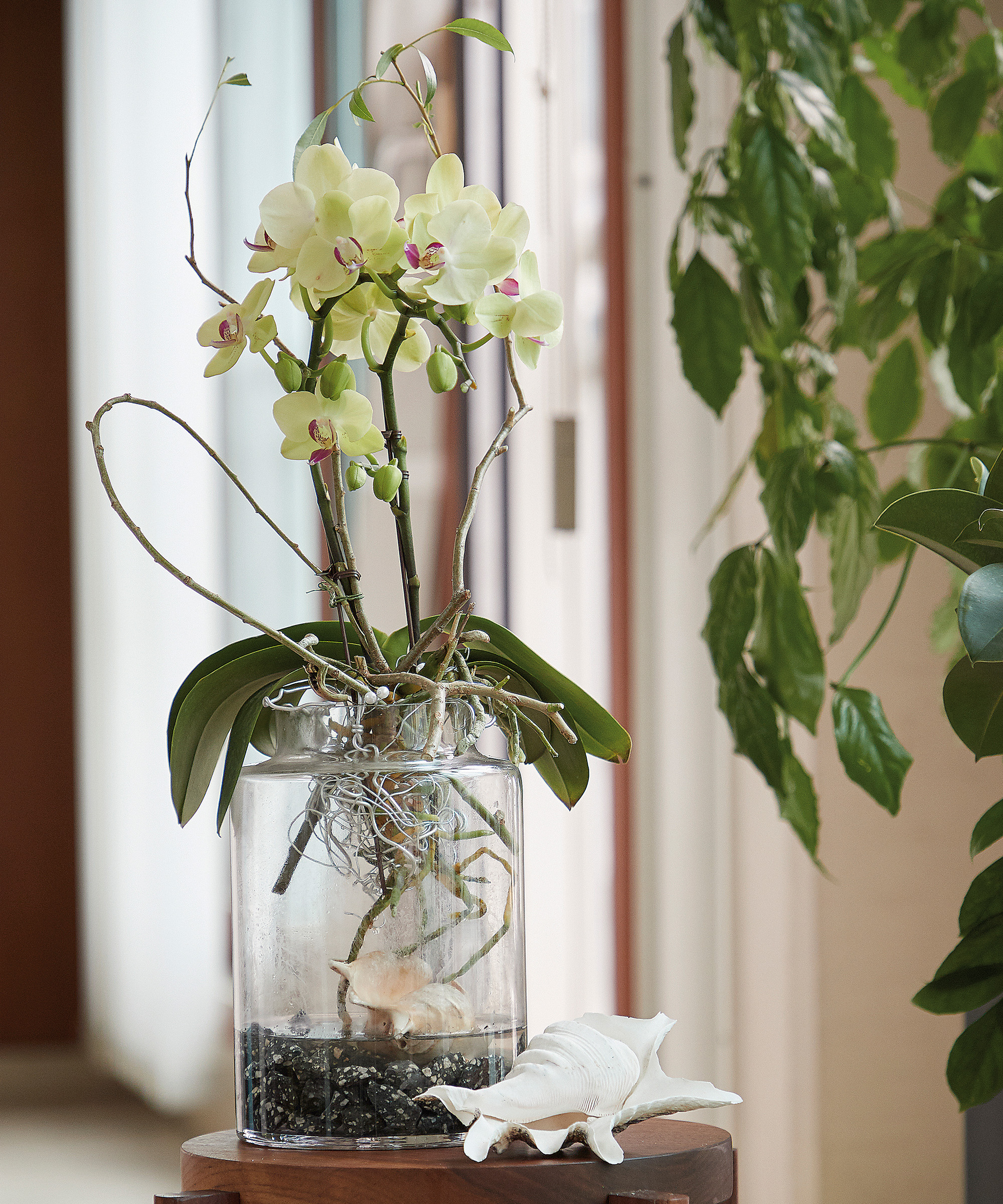
5. Adjust Other Parameters
If watering issues and plant dormancy don’t seem to be the issue for your plant, check and adjust other important growing conditions.
Know your orchid type to determine if it’s getting the right amount of sunlight. Inadequate light is a common issue. Signs include dark green leaves and stunted growth. Give your orchid more time under bright light, natural or artificial.
Orchids need high humidity, especially in hotter weather. If the air in your house is dry, put a pebble tray under the orchid or mist it regularly with water. You can also try placing it near a humidifier or in a bathroom with good light.
Growing media for orchids is not nutrient-rich, so fertilizing is a must. Use water-soluble, orchid-specific plant food as directed on the label. Alternatively, use a regular, balanced plant food, but dilute it to half or quarter strength. Do not fertilize your orchid during dormancy.
Finally, make sure your orchid is growing in the appropriate temperature range. Not all orchids are from hot, tropical rainforests. There are cool, intermediate, and warm growers. Find out which type you have and ensure it is not too warm or too cold. All orchids should get a temperature drop at night.
This article features products available from third party vendors on the Gardening Know How Shop.

Mary Ellen Ellis has been gardening for over 20 years. With degrees in Chemistry and Biology, Mary Ellen's specialties are flowers, native plants, and herbs.
- Melanie GriffithsSenior Editor
-
 Looking For Plants To Give You The Soft And Fuzzies? Try These 5 Fuzzy Leaf Plant Options
Looking For Plants To Give You The Soft And Fuzzies? Try These 5 Fuzzy Leaf Plant OptionsLovers of texture, drama, silver foliage and tactile plants will adore these special sensory garden additions. These fuzzy leaf plant options will leave you all aglow
By Susan Albert
-
 Get Ready For A Summer Of Hummers! Grow These Full Sun Hummingbird Plants and Flowers
Get Ready For A Summer Of Hummers! Grow These Full Sun Hummingbird Plants and FlowersIf you’re lucky enough to enjoy a sunny backyard, make sure you are maxing out on your pollinator opportunities and grow these full sun hummingbird plants and flowers
By Tonya Barnett
-
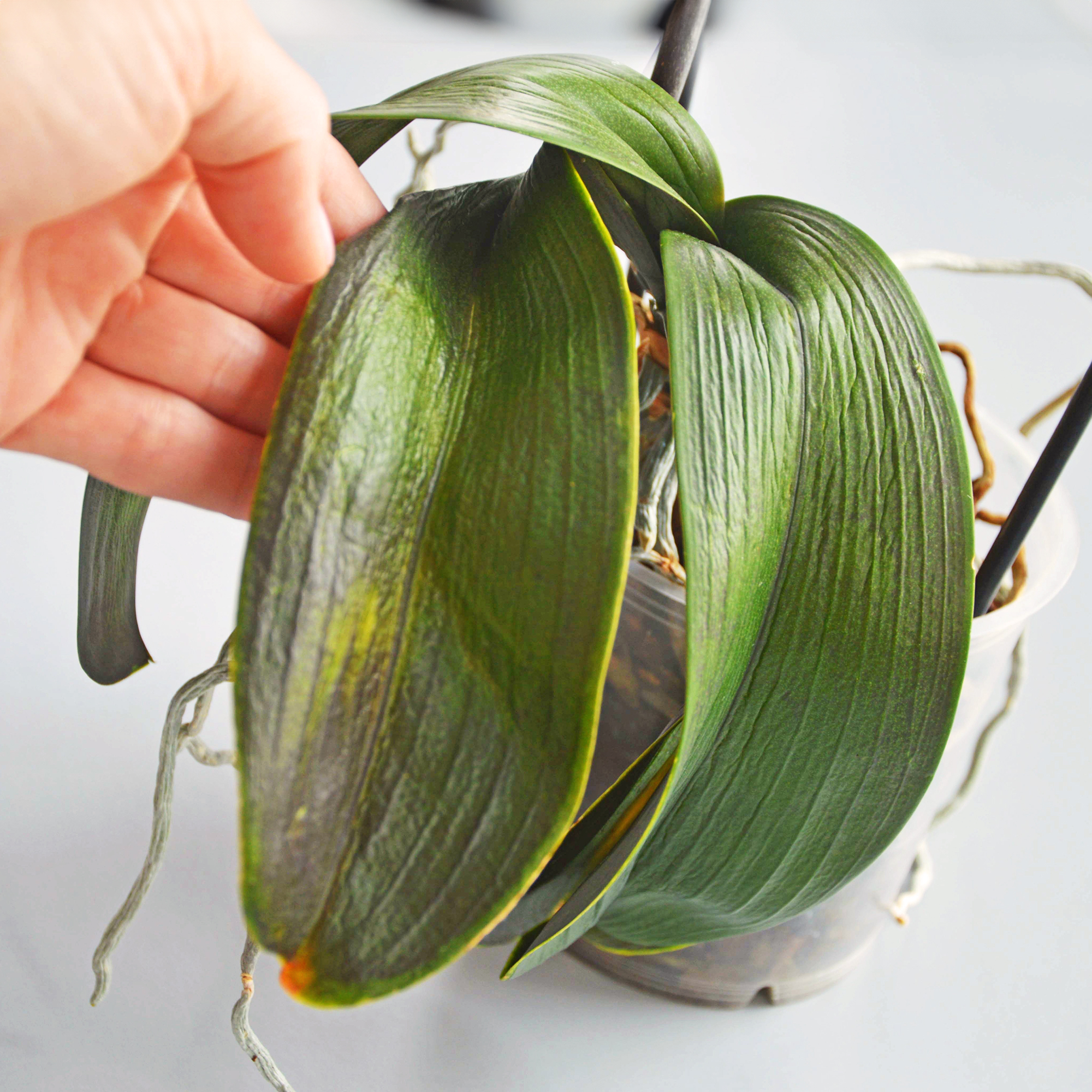 Orchid Leaves Wrinkled? 5 Common Causes & How To Restore Their Vitality
Orchid Leaves Wrinkled? 5 Common Causes & How To Restore Their VitalityAre your beloved orchid's leaves wrinkled? Worry not! Here are the most common causes for puckered orchid foliage, plus how to plump them back up.
By Tonya Barnett
-
 8 Rare Orchids That Make Stunning Houseplants – Some Are Surprisingly Easy To Grow
8 Rare Orchids That Make Stunning Houseplants – Some Are Surprisingly Easy To GrowDiscover unique orchids that will add exotic beauty to your home. Some make easygoing houseplants, while others offer a challenge for more seasoned growers.
By Melanie Griffiths
-
 Why Is My Orchid Dying? 5 Common Causes & How To Save It Before It's Too Late
Why Is My Orchid Dying? 5 Common Causes & How To Save It Before It's Too LateStruggling to keep your orchid alive? Learn the top mistakes that cause orchids to decline – and the simple fixes to bring yours back to life.
By Bonnie L. Grant
-
 Warm Up Your Winter With Indoor Reds! 8 Red Amaryllis Varieties For Sizzling Seasonal Interest
Warm Up Your Winter With Indoor Reds! 8 Red Amaryllis Varieties For Sizzling Seasonal InterestWell loved as a bold decorative holiday bloomer, the red amaryllis is a hot favorite for winter displays. These red amaryllis varieties are guaranteed to fire up the season
By Tonya Barnett
-
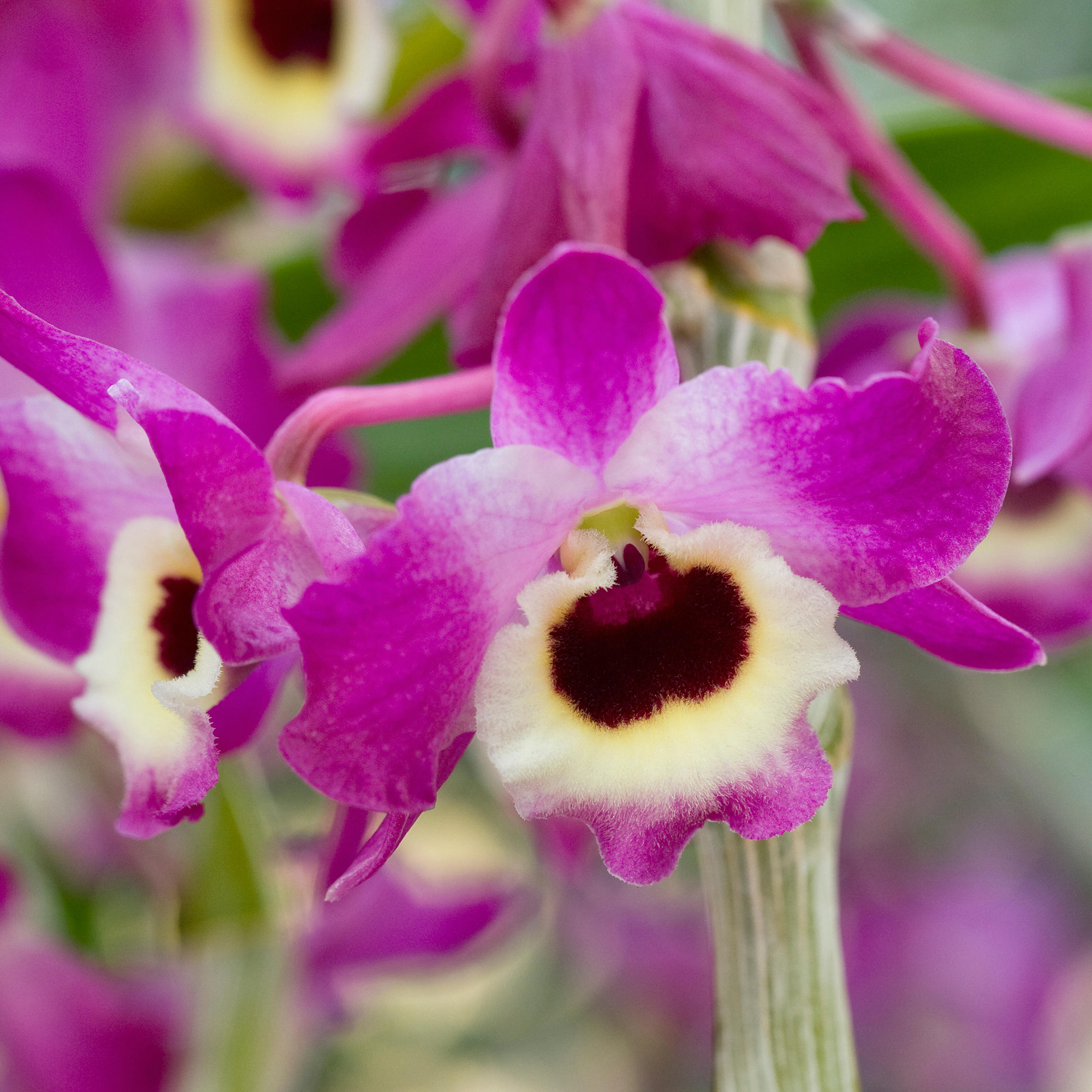 Dendrobium Nobile Orchid: How To Care For This Graceful, Easy-Going Houseplant
Dendrobium Nobile Orchid: How To Care For This Graceful, Easy-Going HouseplantLearn how to care for elegant dendrobium nobile orchids. These undemanding plants make a stunning addition to any orchid collection and are ideal for beginners.
By Bonnie L. Grant
-
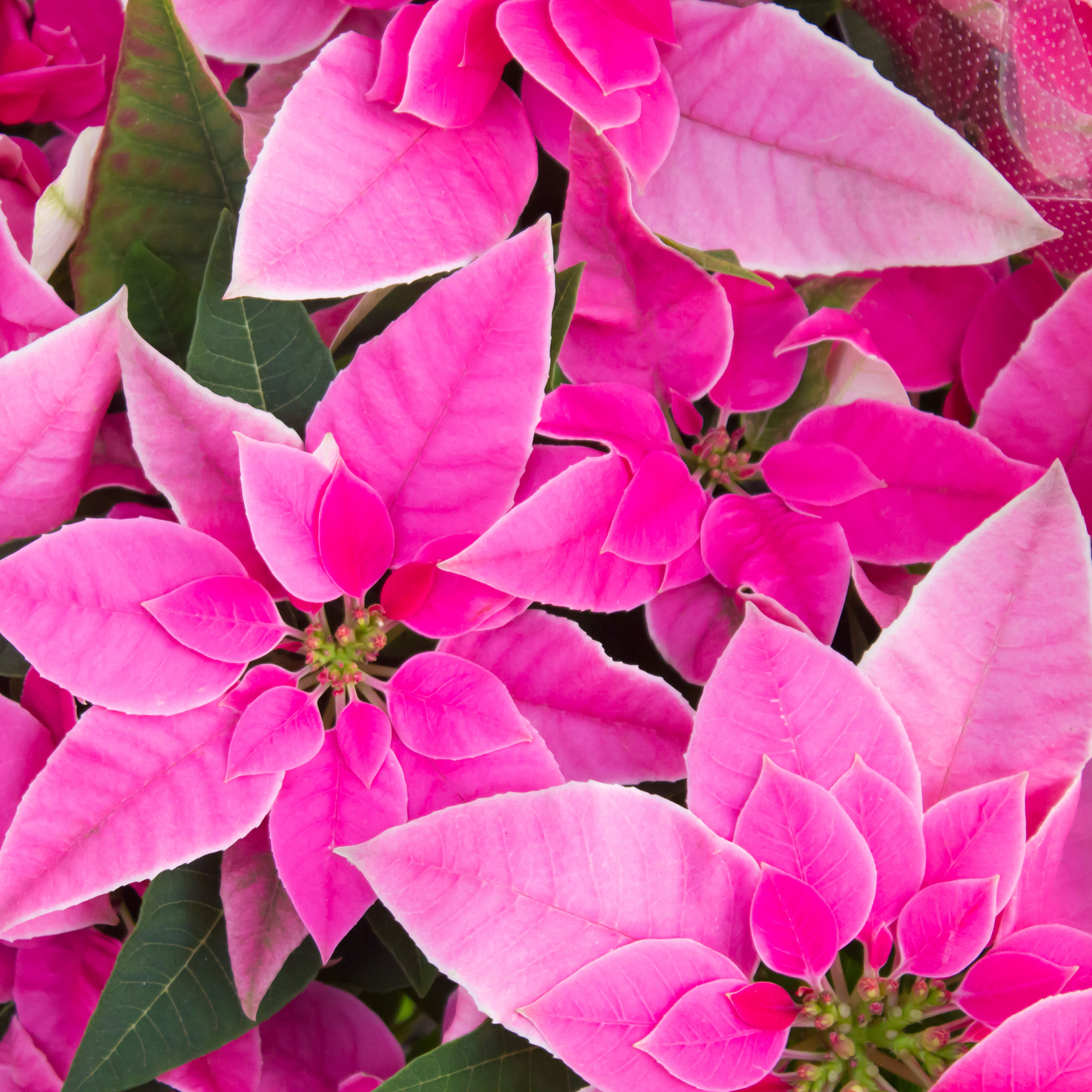 Poinsettia Pinks: 7 Pink Poinsettias To Grow For Neon Hot Tones And Cool Pretty Pastels
Poinsettia Pinks: 7 Pink Poinsettias To Grow For Neon Hot Tones And Cool Pretty PastelsWhile the traditional red poinsettia is a staple of many homes over the holiday period, they are not your only option. For cheerful brights or pastels, why not grow pink poinsettias?
By Tonya Barnett
-
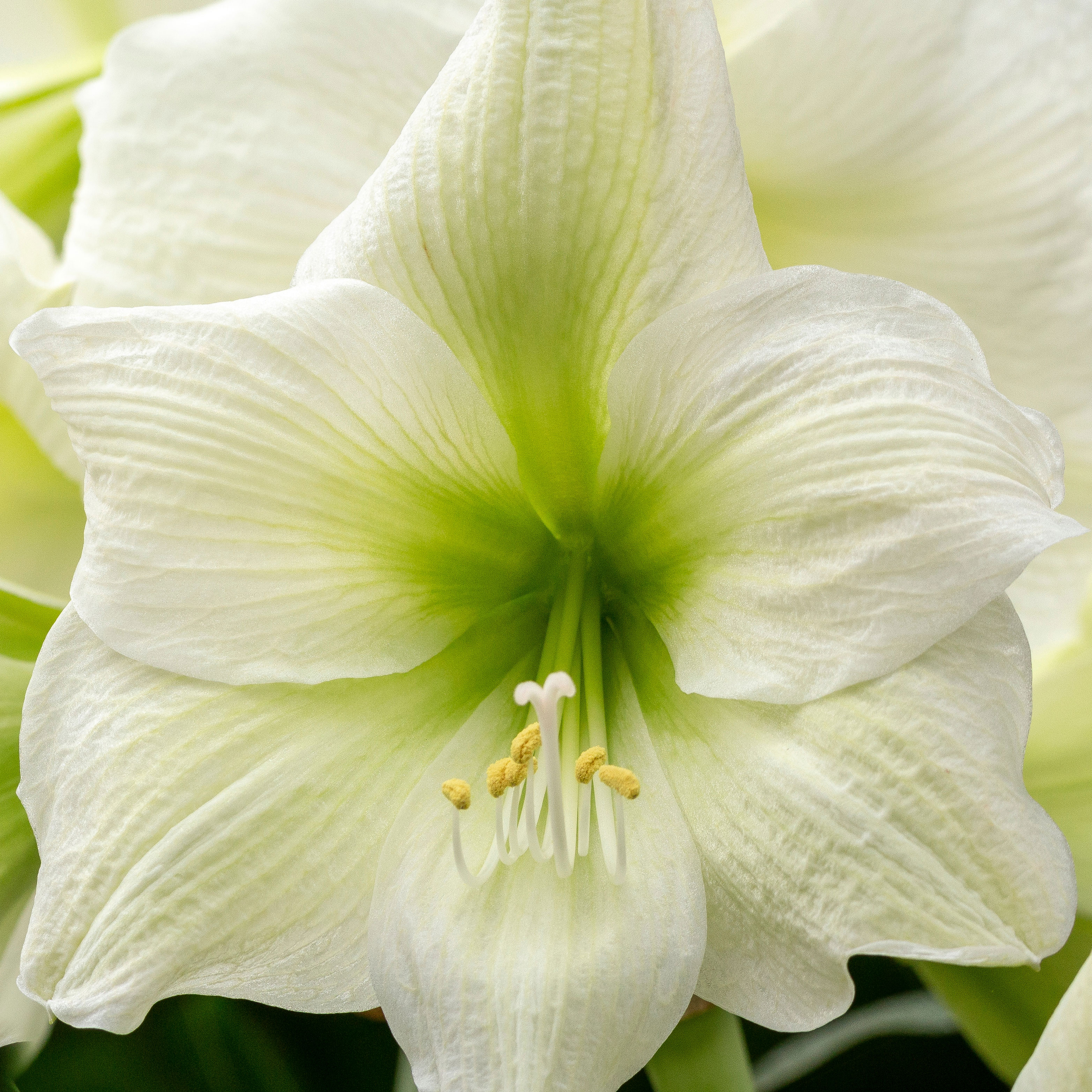 Want Amaryllis But Not Red? Try These 8 White Amaryllis Varieties For The Ultimate Elegance
Want Amaryllis But Not Red? Try These 8 White Amaryllis Varieties For The Ultimate EleganceYou’re probably familiar with the crisp red blooms of the traditional amaryllis – but if you feel like something more unusual and elegant, why not try white amaryllis?
By Mary Ellen Ellis
-
 Are Poinsettias Poisonous To Cats? What You Need To Know For Happy, Healthy Felines
Are Poinsettias Poisonous To Cats? What You Need To Know For Happy, Healthy FelinesThey have the potential to brighten up homes long after the holidays, but are poinsettias poisonous to cats? Make sure you read this before mixing the two!
By Susan Albert